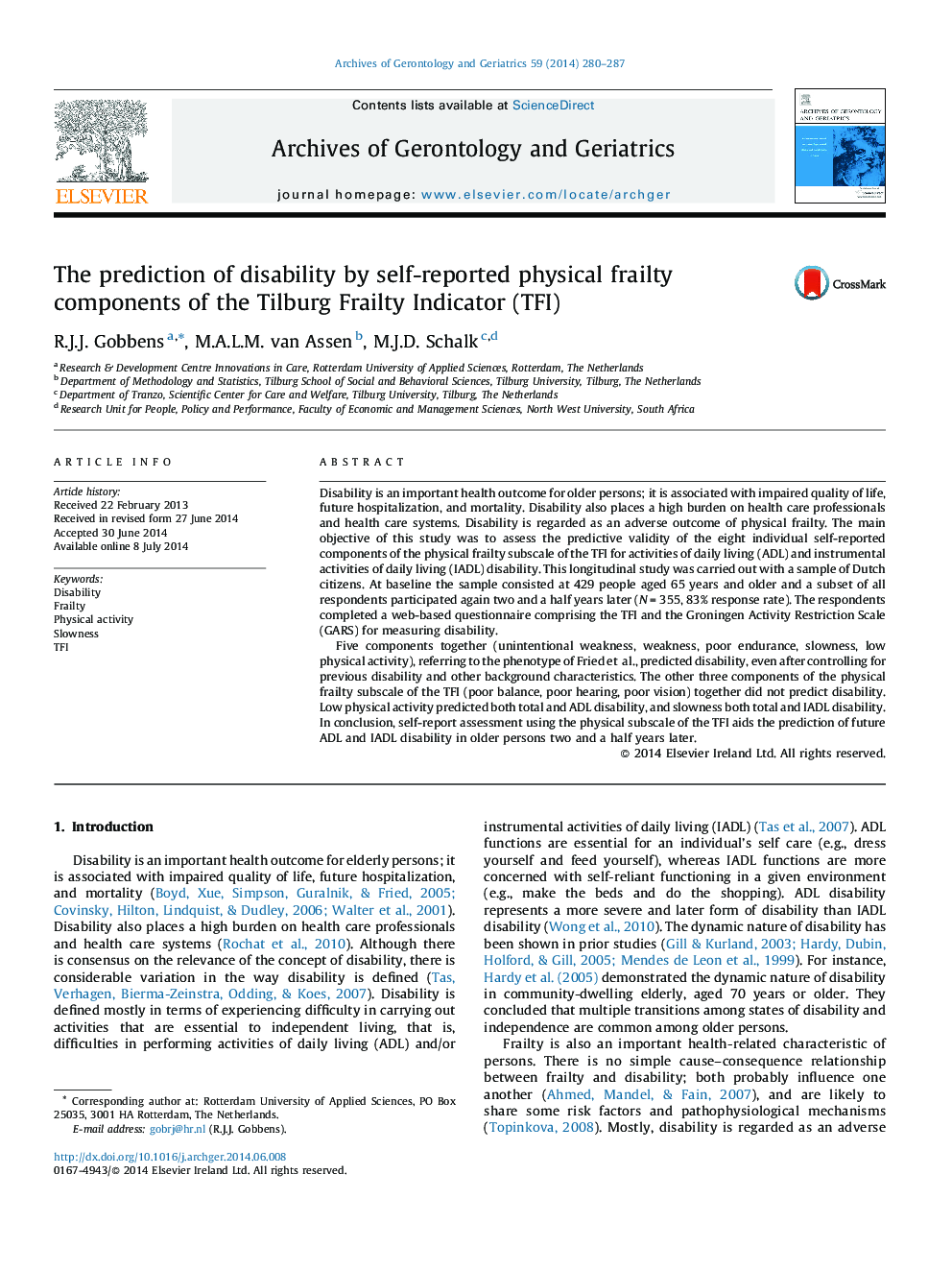| Article ID | Journal | Published Year | Pages | File Type |
|---|---|---|---|---|
| 1902930 | Archives of Gerontology and Geriatrics | 2014 | 8 Pages |
•The physical subscale of the TFI aids in predicting future disability.•The frailty components low physical activity and slowness predicted disability.•All eight physical TFI components were associated with ADL and IADL disability.
Disability is an important health outcome for older persons; it is associated with impaired quality of life, future hospitalization, and mortality. Disability also places a high burden on health care professionals and health care systems. Disability is regarded as an adverse outcome of physical frailty. The main objective of this study was to assess the predictive validity of the eight individual self-reported components of the physical frailty subscale of the TFI for activities of daily living (ADL) and instrumental activities of daily living (IADL) disability. This longitudinal study was carried out with a sample of Dutch citizens. At baseline the sample consisted at 429 people aged 65 years and older and a subset of all respondents participated again two and a half years later (N = 355, 83% response rate). The respondents completed a web-based questionnaire comprising the TFI and the Groningen Activity Restriction Scale (GARS) for measuring disability.Five components together (unintentional weakness, weakness, poor endurance, slowness, low physical activity), referring to the phenotype of Fried et al., predicted disability, even after controlling for previous disability and other background characteristics. The other three components of the physical frailty subscale of the TFI (poor balance, poor hearing, poor vision) together did not predict disability. Low physical activity predicted both total and ADL disability, and slowness both total and IADL disability. In conclusion, self-report assessment using the physical subscale of the TFI aids the prediction of future ADL and IADL disability in older persons two and a half years later.
